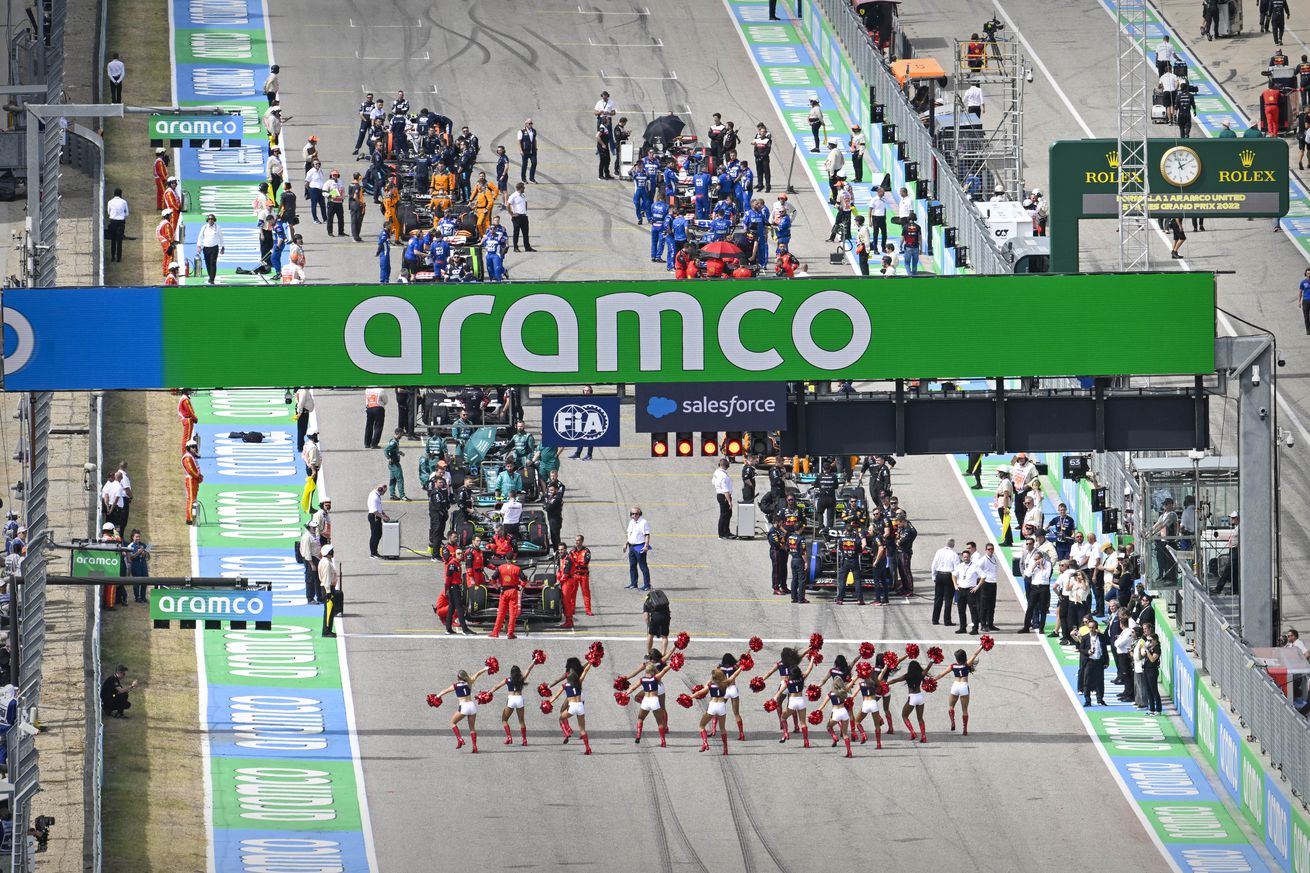Jerome Miron-USA TODAY Sports
FIA issues TD45, aimed at non-F1 expenditures
Could there be more cost-cap drama on the horizon for Formula 1?
Implemented for the 2021 season, the F1 cost-cap aimed to equal the playing field in the sport by limiting the amount of money teams could spend during a calendar year. The full cost-cap regulations, which you can review here, aim to to “promote the competitive balance of the Championship, promote the sporting fairness of the Championship, and ensure the long-term financial stability and sustainability of the F1 teams.”
Last fall, the first penalties were announced under the new cost-cap regulations following FIA’s review of each team’s spending during the 2021 F1 season. Aston Martin was fined for a “procedural breach,” while Red Bull was both fined, and hit with a reduction in their aerodynamic testing allowance, for both a “procedural breach” as well as a “minor” overspend above the cost-cap limit.
However, where there are rules and regulations, there are potential loopholes, and lawyers looking to find them. (Trust me, I used to be a lawyer.)
That leads us to Technical Directive 45, reportedly issued by FIA in recent days. According to this report from The Race, TD45 comes into play with “immediate effect” and is backdated to the beginning of the 2023 calendar year. At issue? Potential grey areas regarding teams and their non-F1 activities.
Many teams have engineering divisions outside of F1. McLaren, Mercedes, Red Bull, Aston Martin, and Ferrari are the most notable. For example, Ferrari just returned to 24 Hours of Le Mans and won in their comeback to one of motorsport’s Triple Crown events. McLaren also participates in IndyCar. Mercedes has an Applied Science division which develops technology for the INEOS Britannia America’s Cup team, where Mercedes is a partner.
While teams are free, provided the other sports do not have similar restrictions in place, to bring knowledge gained within F1 to non-F1 activities, there is a concern within FIA that if the reverse were true, that could give a team a competitive advantage. Non-F1 activities are excluded from a team’s spending under the cost-cap. So if a hypothetical team were to spend money on non-F1 activities, but develop technologies that were later applied to their F1 division, that would be a competitive advantage gained outside of the cost-cap.
This is a concern that has been raised by some team bosses, including Otmar Szafnauer, the Team Principal of Alpine. Speaking in Bahrain earlier this season, Szafnauer outlined the potential loopholes for the media:
“You have a great Formula 1 idea because you’re working on something else, how do you account for the stuff that you thought of when you’re working on something else?” Szafnauer outlined.
“And that’s just an idea, but if you take that even further, it could be other things, you know, developing tools for example for both, but that tool that applies to Formula 1, and you’ve spent loads of investment on developing the tools, and then you marginally account for it in Formula 1.
“That’s the kind of stuff we have to start thinking about to stop.”
There are no reports of any team having violated the cost-cap rules in this manner. This is likely a matter of FIA and F1 trying to get ahead of the issue, and clarifying the matter for all the teams on the grid.
Under the cost-cap regulations, teams were required to submit documentation regarding their spending during the 2022 F1 season by the end of March. Last season, the FIA issued their findings in October for the 2021 season.
So this might be a story to monitor well into the fall.













